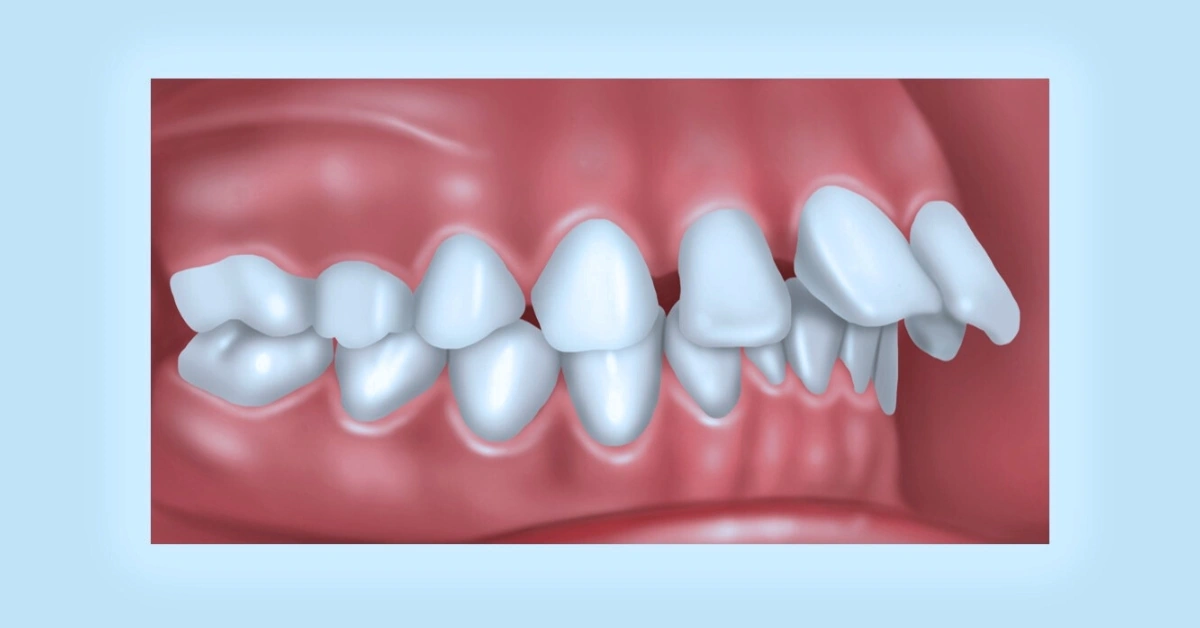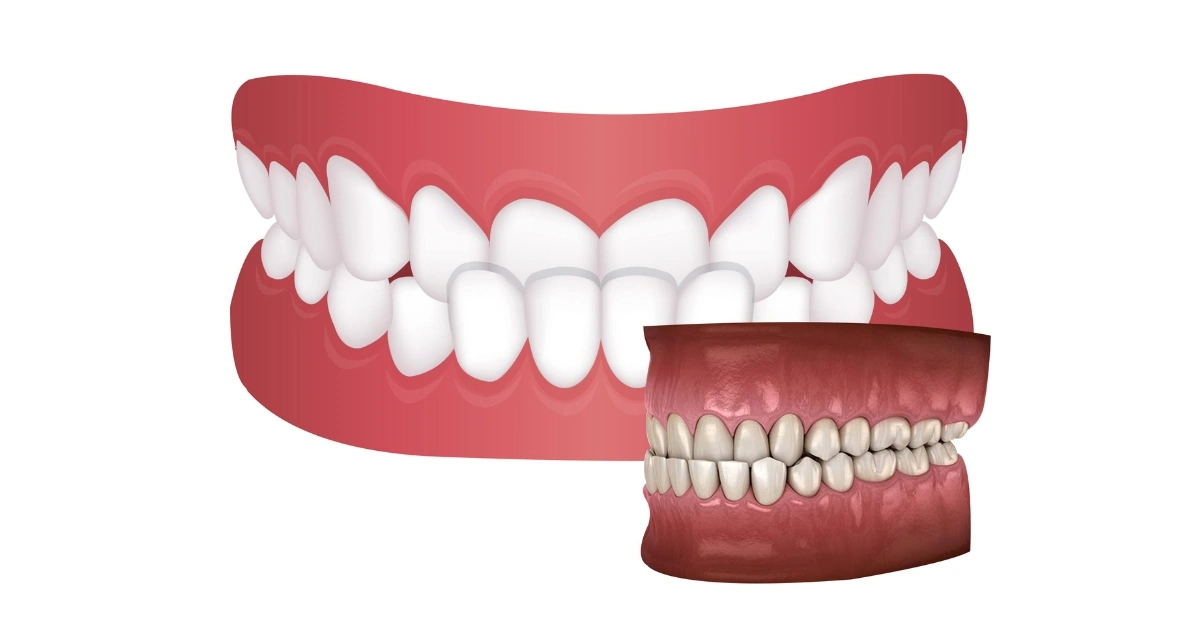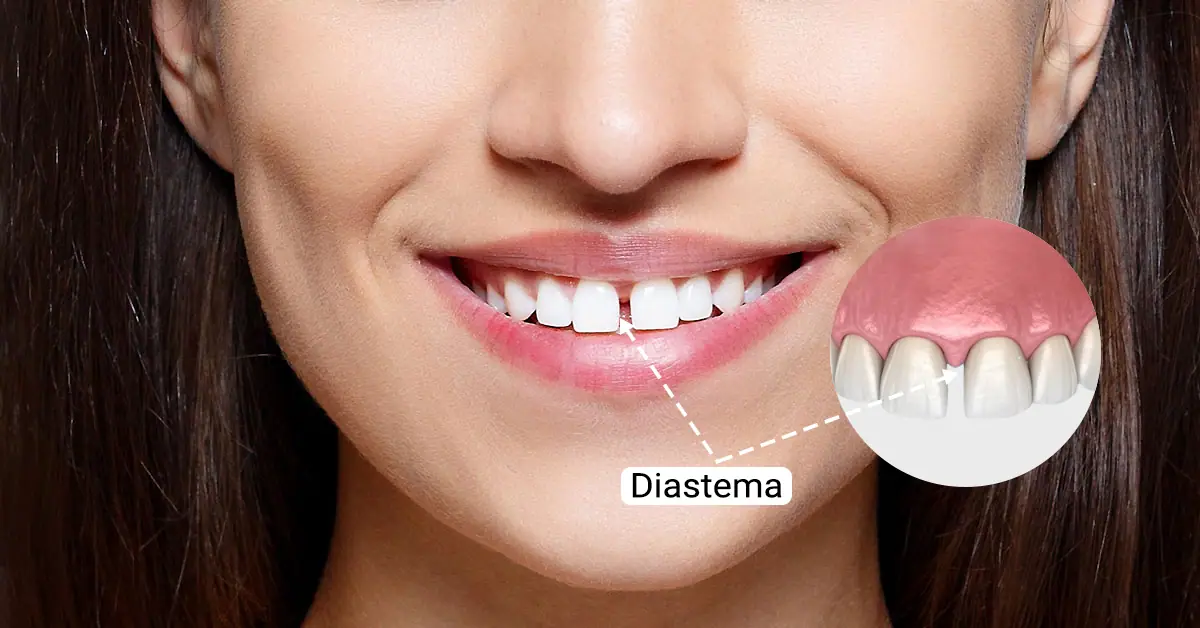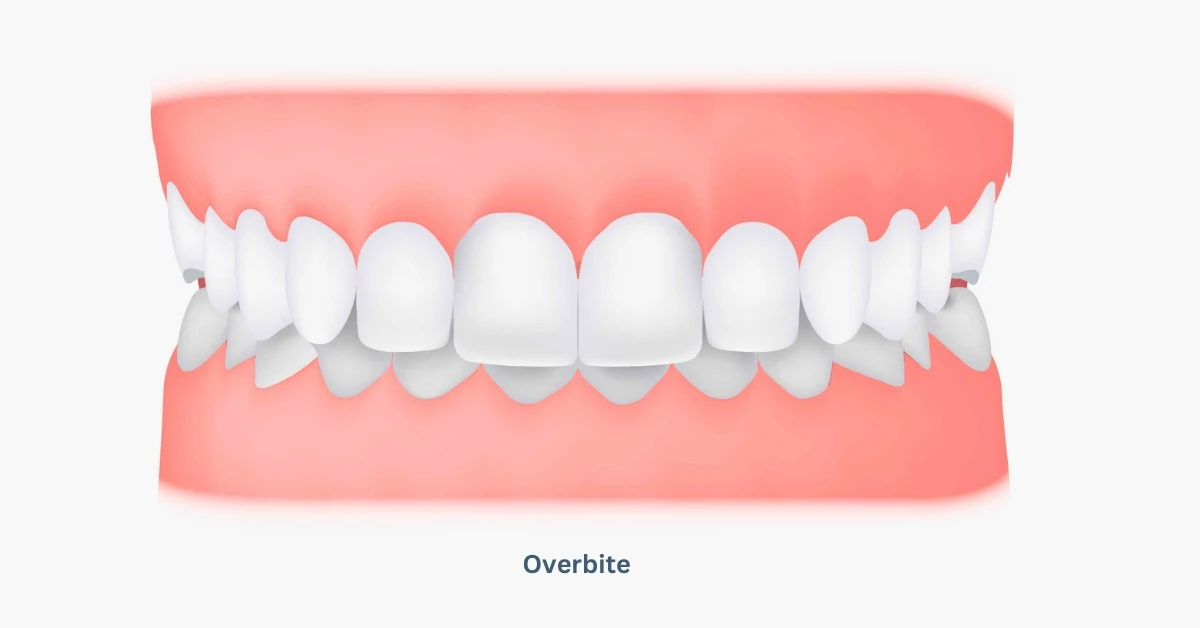A perfect smile is not just about looking good, it’s also an indication of your good health. A smile is also about having teeth that fit together properly and work well. Overjet is one of the most usual dental misalignments that can affect how your smile looks and your overall oral health. This happens when your top front teeth stick out over your bottom teeth, this is also known as buck teeth.
Here, we will discuss an overjet that is a prominent teeth alignment problem, causes and symptoms, and also treatment methods of the same.
What is Overjet?
An overjet is a dental misalignment where the teeth on your upper jaw rest at an outward angle, causing them to extend far in front of the teeth on your lower jaw. This malocclusion not only affects the appeal of your smile but also makes chewing difficult, causes speech problems and other oral functions difficult. Like an overbite, it may also result in jaw pain. You may also find it hard to fully close your lips due to the angle of the teeth.
Types of Overjet
- Dental overjet: The most common type of overjet is caused by malocclusion, which is caused by dental or tooth misalignment.
- Skeletal overjet: The reason for your overjet might be caused by bone development, which is more likely a genetic factor causing such malocclusion.
An overjet is also categorized according to its severity level, such as mild, moderate, or serious. Most people avoid medical attention in mild to moderate cases, which might get severe later.
Causes of Overjet
Overjet teeth can be genetic; however, they can also be caused by childhood habits, such as thumb-sucking, thrusting against the teeth with the tongue, or prolonged use of a pacifier or bottle, which causes the teeth to jut forward in the mouth.
Genetics: As already said, overjet teeth are mostly genetic, meaning the malocclusion is passed on by one of the parents.
Habits: In addition to genetic factors, it may also be caused by childhood habits, such as thumb-sucking, thrusting against the teeth with the tongue, or prolonged use of a pacifier or bottle, that push forward the upper section of teeth.
Early/Late tooth loss: Early baby tooth loss or late retained baby teeth lead to change in position of erupting permanent teeth and cause malocclusion or misalignment.
Jaw issues: Misaligned or underdeveloped jaw bones also cause an overjet. This might be a genetic or hereditary factor.
Symptoms and Effects of Overjet
Cosmetic Concerns: Misaligned teeth issues like overjet is a profound cosmetic concern for the patient as the upper section of teeth close too far and beyond the lower section causing an uneven smile. Due to this the patient might not feel confident enough for facing many people at a time.
Speech Difficulties: Moderate to severe overjet can cause speech impairments such as lisps or slurs affecting pronunciation may make it difficult to communicate publicly.
Chewing Problems: Patients may find difficulties in chewing food properly leading to poor digestion and other nutritional disturbances.
Jaw Pain: Poorly aligned jaw bones cause moderate to severe jaw pain, headaches and other discomforts if not treated for a long time.
Increased Risk of Damage: Overjets can be so significant that individuals are unable to close their mouths comfortably without their teeth being in the way. This condition may lead to increased risk of causing dental injuries, as the lower jaw is likely to be resting in an unsafe position.
Treatment Options
The treatment options for an overjet depend on the severity of the condition. While an overjet may be more challenging to treat than an overbite, it is still possible.
It is advisable to seek orthodontic evaluation and treatment at an early age, preferably between eight and fourteen years of age, as at this time, the teeth are still developing, making it easy to guide their development.
The treatment options for an overjet include:
Traditional braces:
Traditional metal braces are designed to straighten and align teeth by gradually shifting them into a new location. The time frame for correcting an overjet with metal braces will vary depending on the severity of the overjet. An average time frame will be about 18 to 24 months.
Clear aligners:
Clear aligners discreet, lightweight, invisible dental trays are crafted after taking your personalized oral impressions using 3D scanning, X-rays, and other methods. These aligners are made to fit snugly to your teeth and create gentle pressure to pull your misaligned teeth to their desired destination. The treatment period varies from 6 to 18 months, depending on your condition.
Veneers:
Veneers are thin, tooth-coloured, custom-made shells that attach to the surfaces of teeth to boost their appearance. They can correct uneven, misaligned, or misshapen teeth, as well as tooth discolouration and chips.
Veneers enhance the appeal of your smile as your dentist can match them to your preferred shade of white. Veneers are highly durable, stain-resistant, and do not irritate the gums.
Crowns:
Dental crowns, also known as dental caps, are custom-made prosthetics that completely cover your teeth to enhance their appearance. Crowns can help even out misaligned teeth that can last upto ten years, repair damage, and improve the overall appearance of your teeth.
Bonding:
Bonding is a cosmetic procedure in which your dentist applies resin to your teeth and moulds them to give the appearance of straight, even teeth. It is painless and ideal for mild misalignment.
Retainers:
A retainer can be used to tip the upper front teeth back, which is a user-friendly way to address tooth positioning issues. However, it is suitable for young children in mild cases.
Functional appliances:
If the overjet is caused by a problem with upper and lower jaw development, devices called functional appliances can be used to help guide the growth of the jawbones while a child’s bones are still forming.
Surgical treatment:
In severe cases where the malocclusion is skeletal in nature as well as dental, surgical treatment might be necessary to reshape the jawbone itself.
Prevention Tips
Many overjet cases are caused by genetics. If your parents had buck teeth, you are likely to have them, too. But there’s a lot parents can do to help their children grow up with healthier smiles.
To prevent overjet issues in kids, the following steps are suggested:
- Early Intervention: Ban thumb sucking and pacifier use after the age of three years. Consult a doctor if your child still can not break these habits after your intervention.
- Proper Oral Hygiene Habits: After the age of 6 months or so, Switch kids to cups with lids and not bottles. Also, encourage them to be serious about oral health.
- Breaking Harmful Oral Habits: Encourage your kids to keep things like pencils or their fingers out of their mouths.
- Regular Dental Check-ups: Ask your dentist for help if your children grind their teeth at night.
Injuries or illnesses often cause adult-onset teeth misalignment issues. If you are struck or affected in the mouth or face, see your dentist immediately for a check-up.
Final Verdict
While a lot of people tend to avoid mild overjet, they might be unaware of the fact that it can lead to many dental and medical problems, including:
- Concerns about facial and dental appearance
- Front teeth which are more at risk for injury
- Indigestion due to chewing compromisation
- Headaches, jaw pain, and even TMD (Temporomandibular disorders)
So, an early intervention is typically the most successful effort to correct an overjet. Do not hesitate to consider an orthodontic treatment if you have noticed any dental misalignment in your closed one. Timely and regular dental check-ups can cure such issues and are vital for maintaining dental health in a sound position.
For further information on similar issues or orthodontic enquiries, follow i3DLiner’s Blog.
FAQs
Clear aligners can effectively correct overjet, but the overjet’s severity will determine the treatment’s success. Mild to moderate cases of overjet can often be corrected with clear aligners.
Early treatment is the key to success overjet, so doctors may prescribe a treatment plan just after the milk teeth or baby teeth have fallen. However, it is advised that you have a dental consultation as soon as you notice any teeth misalignment in your child.
A mild to moderate overjet can be corrected using clear aligners within 6 to 12 months.
It happens sometimes if you get traditional braces too young without a follow-up treatment. This is not due to the teeth moving but rather the jaw finishing growing into its final adult size. So, never avoid follow-ups if you need any dental treatments.
The direction of excess overlap differentiates an overjet from an overbite. With an overbite, the upper teeth vertically overlap the bottom teeth, while in an overjet, the upper front teeth protrude forwards from the lower front teeth.
References
Overjet: Causes, Treatment, vs. Overbite & More
American Association of Orthodontists (AAO): Malocclusion
National Institute of Dental and Craniofacial Research (NIDCR): Orthodontics
ournal of Clinical Orthodontics: Treatment of mild maxillary incisor proclination with clear aligners







